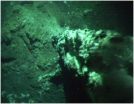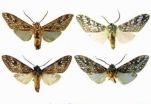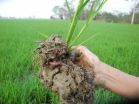(Press-News.org) European Science Foundation's ESSC comments the decisions taken (or not) at ESA's council meeting at ministerial level.
Strasbourg – 6, February, 2013 - The European Space Sciences Committee (ESSC) today released its position on the perspectives for the European Space Agency's (ESA) scientific programmes. The position statement provides recommendations on the outcomes of the ESA council meeting at ministerial level, which took place on 26-27 November 2012 in Naples.
The statement comments on the impact for science-relevant ESA's programmes resulting from the decisions (or lack of) taken in the Naples meeting. They assert that despite some of the positive outcomes of the 2012 Ministerial Council, they are concerned about a number of "non-issues" discussed at the meeting. ESSC observations and recommendations of key points are listed below:
Concerning the promotion of Europe, the ESSC supported the view that some 5% of the 120 billion euro stimulation package agreed by the EU Heads of States should be made available to the space sector. The ESSC strongly feels that implementing it would represent an important and politically visible commitment to support competitiveness and growth for the space sector. It regrets that no decision has been taken on this recommendation.
Concerning the management of space data, no specific decision was taken but the ESSC believes that the Political Declaration towards the European Space Agency that best serves Europe could provide means to support the analysis, interpretation, archiving, and distribution of space data.
Concerning the level of funding for ESA's science-relevant programmes, the ESSC supported the budget requests of the three ESA directorates, as presented to the national delegations.
For the Science Programme, the outcome of this ministerial council is that there is now a loss of inflation compensation. The ESSC is worried about the effects that this decision will have on the present elements of the programme, although it is pleased to see that the erosion of the purchasing power of the Science Programme has been limited. The ESSC recommends prioritising the scientific return of the Science Programme.
For the optional robotic exploration programme (ExoMars), the 2016 segment appears secure, yet the situation of the 2018 mission remains quite unclear. The ESSC welcomes the advances made with the approval of the DG's proposal but would have expected a stronger statement regarding the importance of the mission for the European planetary science, and a clearer strategy to bring the mission to fruition.
For the optional Lunar Lander programme, the ESSC reiterates its view that lunar exploration should be an integral part of ESA's Exploration Programme and thus regrets that this proposal was not subscribed in Naples. The ESSC reiterates its view that Europe should continue to play a leading role in the developing Global Exploration Strategy.
For the Earth observation programme, the ESSC is concerned about the situation of the Earth Observation Envelope programme. The ESSC emphasises not to significantly deplete the resources made available to existing envelope and optional programmes.
For GMES-related aspects, the ESSC is concerned about the current complex and undefined situation of GMES and suggests that a deep analysis and a posteriori evaluation of the whole GMES governance structures be conducted
For the life and physical sciences in space programme (ELIPS), the ESSC regrets that its recommendation regarding the need to agree on a post-ISS/post-2020 framework was not followed up. The ESSC wishes to stress that Europe is not in a position to execute its scientific objectives by itself.
Regarding international collaboration, the ESSC regrets that a specific opportunity to collaborate with China did not materialise. Opening collaborations with other partners, in addition to NASA, will be highly beneficial for the near future.
All in all, the ESSC is ready to contribute to a consolidated reflexion on the scientific and programmatic aspects of these issues.
###
The European Space Sciences Committee reacts
European Science Foundation's ESSC comments the decisions taken (or not) at ESA's council meeting at ministerial level
2013-02-06
ELSE PRESS RELEASES FROM THIS DATE:
Learning from the linker
2013-02-06
Mature cells can be reprogrammed to pluripotency and thus regain the ability to divide and differentiate into specialized cell types. Although these so-called induced pluripotent stem cells (iPS cells) represent a milestone in stem cell research, many of the biochemical processes that underlie reprogramming are still not understood. Scientists from the EMBL Hamburg and from the Max Planck Institute for Molecular Biomedicine in Münster, Germany now shed new light on this process. In a study published today in Nature Cell Biology, the scientists describe important details ...
Shimmering water reveals cold volcanic vent in Antarctic waters
2013-02-06
The location of an underwater volcanic vent, marked by a low-lying plume of shimmering water, has been revealed by scientists at the National Oceanography Centre, Southampton.
Writing in the journal PLOS ONE the researchers describe how the vent, discovered in a remote region of the Southern Ocean, differs from what we have come to recognise as "classic" hydrothermal vents. Using SHRIMP, the National Oceanography Centre's high resolution deep-towed camera platform, scientists imaged the seafloor at Hook Ridge, more than 1,000 metres deep.
The study, funded by the ...
Targets of bully bosses aren't the only victims, new UNH research shows
2013-02-06
DURHAM, N.H. – Abusive bosses who target employees with ridicule, public criticism, and the silent treatment not only have a detrimental effect on the employees they bully, but they negatively impact the work environment for the co-workers of those employees who suffer from "second-hand" or vicarious abusive supervision, according to new research from the University of New Hampshire.
In the first ever study to investigate vicarious supervisory abuse, Paul Harvey, associate professor of organizational behavior at UNH, and his research colleagues Kenneth Harris and Raina ...
ZooKeys opens the gates to America's moth diversity
2013-02-06
Since its inception in 2009, the "Contributions to the systematics of New World macro-
moths" series in ZooKeys has been playing an important role in publishing taxonomic changes and new discoveries concerning moth diversity in North America. With a total of 49 publications by 38 authors, this well-established series is among the topic leaders, alongside publications such as Canadian Staphylinidae.
Geographic coverage in Zookeys has previously focused primarily on the North American fauna (Canada, United States and Mexico). This issue marks a rapid acceleration in contributions ...
Study identifies skiers who can be successfully treated without surgery after an ACL tear
2013-02-06
Roughly a quarter of recreational skiers who tear their anterior cruciate ligament (ACL) while hitting the slopes can be successfully treated without surgery, according to a new study. The study, conducted by researchers at Hospital for Special Surgery in New York City, appears online ahead of print in the journal Knee Surgery Sports Traumatology Arthroscopy.
"Some patients who tear their ACL while skiing can get away without surgery. Their ligament heals by itself, they will have stable knees, and they will be able to do whatever they want, including skiing," said Robert ...
Benefits of Bt corn go beyond rootworm resistance
2013-02-06
Engineered to produce the bacterial toxin, Bt, "Bt corn" resists attack by corn rootworm, a pest that feeds on roots and can cause annual losses of up to $1 billion. But besides merely protecting against these losses, the Bt trait has also boosted corn yields, in some cases beyond normal expectations. So what makes it so successful?
Fred Below and Jason Haegele of the University of Illinois at Urbana-Champaign set out to answer that question by determining how Bt corn uses nitrogen in the soil. Nitrogen is an important nutrient for corn, and with better root systems, ...
Mercury contamination in water can be detected with a mobile phone
2013-02-06
Chemists at the University of Burgos (Spain) have manufactured a sheet that changes colour in the presence of water contaminated with mercury. The results can be seen with the naked eye but when photographing the membrane with a mobile phone the concentration of this extremely toxic metal can be quantified.
Mercury contamination is a problem that is particularly affecting developing countries. It poses a risk to public health since it accumulates in the brain and the kidneys causing long term neurological illnesses. It is emitted from industrial and mining waste, especially ...
New steps recommended to preserve China's famous Terracotta Warriors and other relics
2013-02-06
The preservation of immovable historic relics displayed in large open spaces like China's world-renowned Museum of Qin Terracotta Warriors and Horses requires air curtains and other modifications to recreate the primitive environment from which archaeologists excavated the relics. That's the conclusion of a study of environmental control measures for archaeology museums in the People's Republic of China. Their study appears in ACS' journal Environmental Science & Technology.
ZhaoLin Gu and colleagues point out that environmental factors have deteriorated many of the ...
When talk is free: The effects of pricing plans on consumer demand
2013-02-06
NEW YORK February 6, 2012 From banks to telecom providers, various industries are moving to pricing plans that offer a certain amount of "free" service. Bank customers are allowed a certain number of free ATM withdrawals each month, and cell phone users receive free minutes. These three-part plans — which also include a regular (usually monthly) access fee as well as a usage fee if the customer exceeds the free allotment — are replacing older two-part plans that charged an access fee and a usage price for every unit of consumption.
Recent studies show that consumers ...
Thailand: Astonishing 10 new species of semi-aquatic freshwater earthworms revealed
2013-02-06
The semi-aquatic earthworms in the genus Glyphidrilus are somewhat unfamiliar species that live between the terrestrial and freshwater ecosystems of rivers, streams, canals, ponds, swamps and paddy systems. Remarkably, each species is endemic to a single water basin, carrying its own signature of evolution from their common origin. A study describing ten newly discovered species of the genus has been published in the open access journal ZooKeys.
In Thailand, the species demonstrate astonishing biodiversity due to the monsoon climate contributing to drastic river system ...
LAST 30 PRESS RELEASES:
Exploring how patients feel about AI transcription
Category ‘6’ tropical cyclone hot spots are growing
Video: Drivers struggle to multitask when using dashboard touch screens, study finds
SLU research shows surge in alcohol-related liver disease driving ‘deaths of despair’
Rising heat reshapes how microbes break down microplastics, new review finds
Roots reveal a hidden carbon pathway in maize plants
Membrane magic: FAMU-FSU researchers repurpose fuel cells membranes for new applications
UN Member States pledge to increase access to diagnosis and inhaled medicines for the 480 million people living with COPD
Combination therapy shows potential to treat pediatric brain cancer ATRT
Study links seabird nesting to shark turf wars in Hawai‘i
Legal sports betting linked to sharp increases in violent crime, study finds
Breakthrough AI from NYUAD speeds up discovery of life-supporting microbes
New Eva Mayr-Stihl Foundation funding initiative boosts research at University of Freiburg on adaptation of forests to global change
The perfect plastic? Plant-based, fully saltwater degradable, zero microplastics
Bias in data may be blocking AI’s potential to combat antibiotic resistance
Article-level metrics would provide more recognition to most researchers than journal-level metrics
Satiety’s little helper: Protein that supports appetite regulating protein identified
UF dives deep into predicting storm damage with computer models
A stormy ocean voyage yields insights on the global carbon cycle
Scientists identify first non-coding gene that controls cell size
Demonstration of altermagnetism in RuO₂ thin films -- A new magnetic material for the AI era
Penn researchers awarded $25M to conduct trial using smartphones to fight heart disease
PCORI awards funding for new patient-centered healthcare research
Exploring the origins of the universe: 145 low-noise amplifiers complete ALMA telescopes
Empress cicada wings help illuminate molecular structure
Using sound waves to detect helium
Time burden in patients with metastatic breast and ovarian cancer from clinic and home demands
Researchers discover bias in AI models that analyze pathology samples
Scientists ID potential way to prevent brain injuries from triggering Alzheimer's
MASTER 2nd Open Call: Execution period kick-off
[Press-News.org] The European Space Sciences Committee reactsEuropean Science Foundation's ESSC comments the decisions taken (or not) at ESA's council meeting at ministerial level



